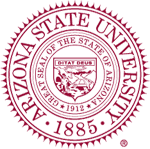
|
|
![]()
Call for Papers (download a PDF version)
Papers offering novel research contributions in all aspects of access control are solicited for submission to the 20th ACM Symposium on Access Control Models and Technologies (SACMAT 2015). Accepted papers will be presented at the symposium and published by the ACM in the symposium proceedings.
Topics of Interest
We are soliciting submissions covering many topic areas that have relevance to access control. These include, but are not limited to, the following:
- Access Intelligence
- Administration
- Applications
- Attribute-based systems
- Authentication
- Big data
- Biometrics
- Cloud computing
- Cryptographic approaches
- Cyber-physical systems
- Databases and data management
- Design methodology
- Distributed and mobile systems
- Economic models and game theory
- Enforcement
- Hardware enhanced
- Identity management
- Mechanisms, systems, and tools
- Models and extensions
- Obligations
- Privacy
- Policy engineering and analysis
- Requirements
- Risk
- Safety analysis
- Standards
- Theoretical foundations
- Trust management
- Usability
Paper Submission and Format
Papers are to be submitted electronically using the EasyChair conference management system (https://easychair.org/conferences/?conf=sacmat2015). Papers must be submitted as a single PDF file, formatted for 8.5" X 11" paper, and be no more than 5MB in size. It is the responsibility of the authors to ensure that their submission will print easily on simple default configurations.
Papers must be written in English. Authors are required to use the ACM format for papers, using one of the ACM SIG Proceedings Templates (http://www.acm.org/sigs/pubs/proceed/template.html). The length of the paper (in the proceedings format) must not exceed ten US letter pages, excluding well-marked appendices, and no more than twelve pages in total. Committee members are not required to read the appendices, so papers must be intelligible without them.
The submission must be anonymous, so information that might identify the authors - including author names, affiliations, acknowledgements, or obvious self-citations - must be excluded. It is the authors' responsibility to ensure that their anonymity is preserved when citing their own work.
All submissions must contain a significant original contribution. That is, submitted papers must not substantially overlap papers that have been published or that are simultaneously submitted to a journal, conference or workshop. In particular, simultaneous submission of the same work is not allowed. Where appropriate, relevant related work, including that of the authors, must be cited.
Submissions that are not accepted as full papers may be invited to appear as short papers. At least one author from each accepted paper must register for the conference prior to the camera-ready deadline.
Panel Proposal Submission
Panel proposals should be no longer than two pages, and should identify potential panelists, indicating those who have confirmed their willingness to participate. We especially solicit panels with participants from industry and/or government. Proposals can be e-mailed to the Panels Chairs, Anna Squiciarrini (asquicciarini@ist.psu.edu) and Ting Yu (tyu@qf.org.qa).
System Demonstration Submission
Since 2011, SACMAT has included system demonstration sessions during the symposium.
To be considered for presentation, authors should submit a four-page demonstration proposal prepared according to the formatting guidelines described above for regular papers. However, demonstration proposals are not subject to double-blind review, hence author name(s) and affiliation(s) should be included in the submission. Demonstration proposals will be included in the final proceedings. The demonstration proposal should clearly describe (1) the overall architecture of the system or technology demonstrated, and (2) one or more demonstration scenarios that describes how the audience, interacting with the demonstration system or the demonstrator, will gain an understanding of the underlying technology. Submissions will be evaluated based on the motivation of the work behind the use of the system or technology to be demonstrated and its novelty.
Demonstration proposals or questions about the system demonstration session can be emailed to the demonstrations chair, Andreas Schaad (aschaa@googlemail.com).
Copyright (c) ACM SACMAT All rights reserved.
